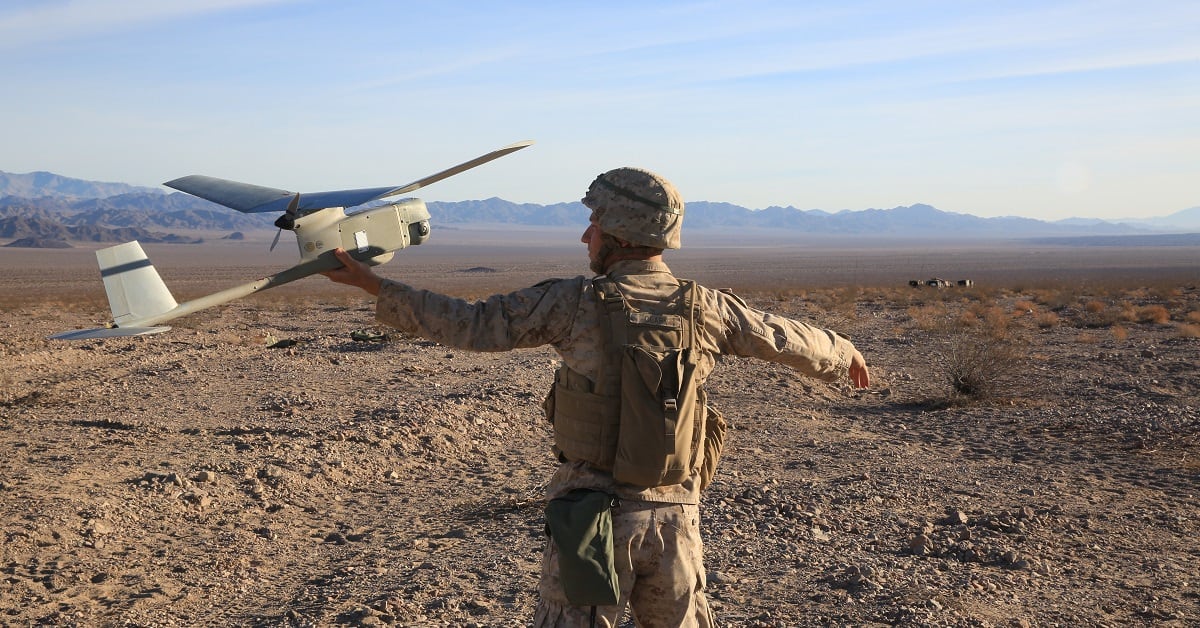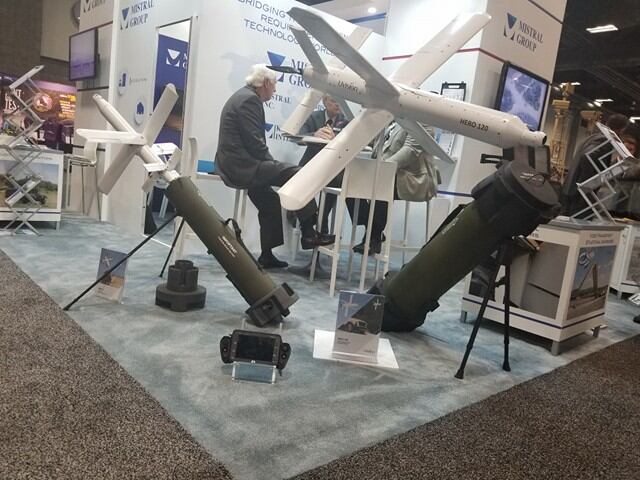The Corps has ditched the 120mm Expeditionary Fire Support System, but now it needs a flexible and portable system that can match its range and lethality.
Loitering munitions or suicide drones may offer the Corps the solution it’s looking for, affording Marines portability, range and a variety of payloads for either electronic attack or kinetic strikes.
One Maryland-based company called Mistral Group could provide the Corps with a suite of suicide drones varying in size and payload that melds with its expeditionary and sea-based nature.
Mistral’s series of loitering munitions could aid the Corps on the battlefield by providing it a top-down attack capability. The modern battlefield has become littered with a host of shoulder-fired and ground-based anti-tank systems from BGM-71 TOWs to Russian Kornet portable guided missile systems, Yossi Gez the vice president of marketing for Mistral Inc., told Marine Corps Times.
RELATED

It’s all about ensuring the Corps maintains an unfair advantage on the battlefield, Gez said.
Mistral’s Univision Hero 120 drone could be a suitable replacement for the Corps’ 120mm mortar.
The drone is man-portable, air launched and features a Javelin multipurpose warhead, meaning a squad of Marines could dispatch the system to take out enemy troops or armored vehicles.
The Hero 120 also has a flight time of one hour and a 40-km range, making it an attractive option to replace the cumbersome 120mm mortar system.
Mistral also offers a much larger suicide drone that packs extended range for the Corps’ deep attack needs. The Hero 400 EC could aid the Corps in sea based or land-based missions.
The Hero 400 EC boasts a 100-km range with an additional 30 minutes of loiter time. It packs a 22-pound warhead and has the ability to carry a variety of payloads for lethal strikes or electronic attack.
The Corps has been increasingly interested in loitering munitions.
So far the Marines have successfully tested six suicide drones controlled as a swarm by a single operator, and eventually wants to increase that number to 15.
And in April, the Corps posted a request for information to industry leaders for a man-portable, tube-launched loitering munition with a range of 40-60 km.
But one concern the Corps has about fielding its future loitering munitions is the potential of reduced battlefield situation awareness if a drone operator is glued to his controller screen.
Because of this, the Corps want its systems to come with “minimal operator burden,” Capt. Matt Cornachio, a fires project officer with Marine Corps Warfighting Laboratory, said during a media roundtable in July.
Mistral says its suite of loitering munitions do just that. An operator on the ground who has control of the munition doesn’t actually need to pilot the system, Gez explained.
Multiple Mistral munitions could loiter overhead while a ground operator need only to select and identify a target for it to destroy, Gez said. This would allow Marines to stay focused on the battlefield.
Mistral also offers a smaller suicide drone called the Hero 30 that can take out troops and light skinned vehicles.
Shawn Snow is the senior reporter for Marine Corps Times and a Marine Corps veteran.





